Most Eco-Friendly Cryptocurrencies to Invest in 2024

Global warming has become one of the most pressing issues in today’s world, prompting many companies to implement sustainability practices. This is no different in the crypto market, with an abundance of eco-friendly projects springing up that look to reduce their energy consumption and make a positive impact on the environment.
In this guide, we’ll discuss the most eco-friendly cryptocurrencies on the market, exploring the technology that enables them to operate sustainably, before highlighting several strategies investors can use to identify eco-friendly crypto projects.
The Most Environmentally-Friendly Cryptocurrency Projects in 2024
Listed below are 9 of the most sustainable cryptocurrency projects this year, each thoroughly vetted to ensure they positively impact the environment. We’ll explore these eco-friendly cryptocurrencies in detail in the following section, covering their underlying technologies and future roadmaps.
- Green Bitcoin ($GBTC) – Most environmental-friendly crypto, over $1.2M raised.
- eTukTuk (TUK) – Crypto builds EV charging stations and offers 167% staking APYs.
- Bitcoin Minetrix (BTCMTX) – Crypto decentralizes cloud mining. $11.4M raised.
- Tezos (XTZ) – Energy efficient project known for fast transaction speed.
- Ethereum (ETH) – #2 largest crypto, develops sustainable DApps.
- Solana (SOL) – Popular carbon-neutral protocol offering lightning speeds.
- IOTA (MIOTA) – Energy-efficient crypto using the latest DAG software.
- Polkadot (DOT) – Best modular network for cross-chain interoperability.
- Algorand (ALGO) – Carbon negative blockchain from Turing award winner.
A Closer Look at the Most Eco-Friendly Cryptos to Invest
When looking for the most energy-efficient cryptocurrency, investors must ensure that the development team place sustainability on their list of priorities. Where this is the case, projects will often employ leading technologies to reduce their energy requirements – or even offset their carbon footprint completely.
With that in mind, let’s dive in and explore the most eco-friendly cryptocurrency projects on the market right now:
1. Green Bitcoin – Most Environmentally Sustainable Crypto, Get 252% Staking Yields
Green Bitcoin is a new project offering an innovative and sustainable way to earn crypto yield. Through their Predict-to-Earn model, $GBTC holders earn rewards by simply predicting what the Bitcoin price does next.
Green Bitcoin is allowing both beginners and veterans to translate their market insights into tangible rewards.
At its heart, Green Bitcoin is an Ethereum-based Proof-of-Stake mechanism meaning it is both cheaper to run and good for the planet. Latest figures show the Green Bitcoin chain uses just 34 Watts per Hour compared to a whopping 1.7 million used by Bitcoin.

Green Bitcoin is currently on presale and at the time of press can be bought for $0.4854. With more GameFi prediction options planned, the future looks bright for $GBTC.
To join the ICO, simply connect your Coinbase or Metamask wallet or use Wallet Connect and purchase your $GBTC with either BNB, ETH or USDT. You can also use your debit card.
Once obtained, you must stake your $GBTC to participate in the Bitcoin price prediction game. When staked, you will start earning rewards which can then be claimed once the presale has ended.

So far, over 2.7 million $GBTC have already been staked. With 936,720 $GBTC already allocated in rewards, it’s clear to see why a lot of people are talking about Green Bitcoin. Investors can also stake $GBTC and generate annual yields as high as 252%.
When $GBTC hits Ethereum DEXs, some supply will be locked to ensure trading is both smooth and decentralized. However, once established, $GBTC holders will be able to take part in new challenges every week as the community continues to thrive.
To keep up to date with the latest developments, follow Green Bitcoin on X and join the exclusive Telegram channel. For further information on project tokenomics and the staking mechanism, be sure to download the Greenpaper.
| Presale Started | 6 Dec 2023 |
| Purchase Methods | ETH, USDT, BNB, Card |
| Chain | Ethereum |
| Min Investment | None |
| Max Investment | None |
2. eTukTuk (TUK) – Best for Cutting Carbon Emissions
eTukTuk, is a promising new eco-friendly automotive project built on the Cardano blockchain seeking to combat climate change. Replacing traditional combustion engine TukTuks with electric vehicles, eTukTuk aims to significantly curb carbon emissions in the developing world.
At press time, native token $TUK is on presale and has raised more than $1.4 million – it is also offering huge staking rewards of 167% APY.
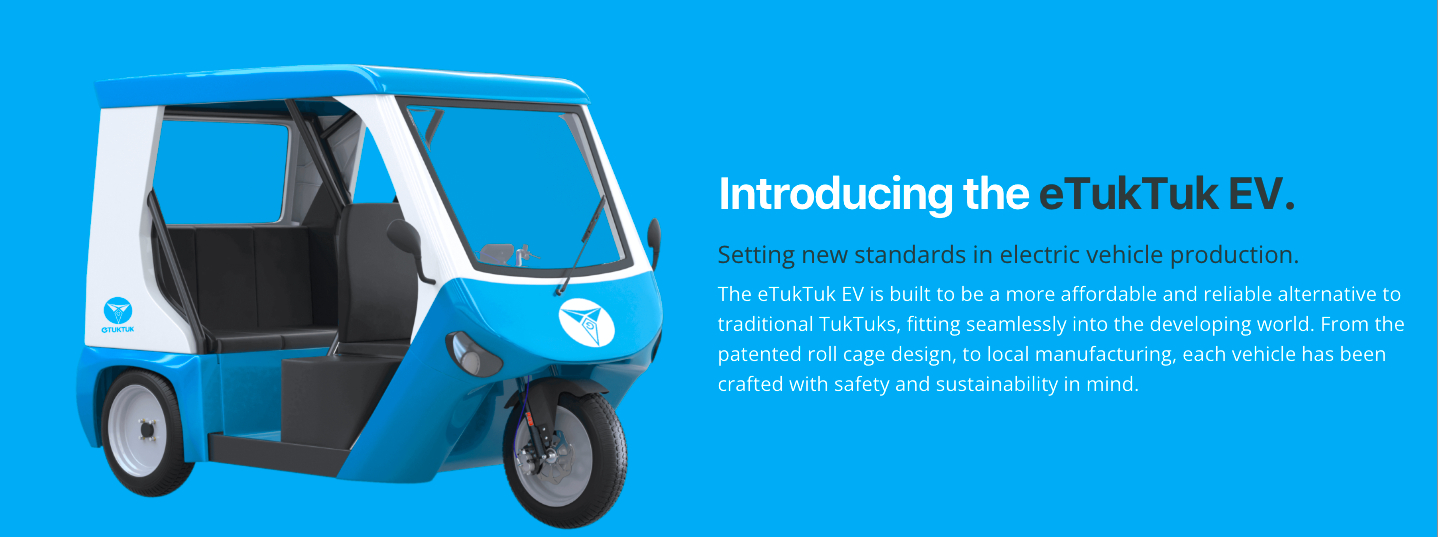
According to the eTukTuk whitepaper, their electric vehicles also incorporate a unique roll cage design for enhanced safety and sustainability.
The platform introduces a new staking method. Users dedicate their tokens to power nodes, which are crucial for running charging stations. As transactions at these charging spots increase, token stakers might witness a rise in their Annual Percentage Yield (APY).
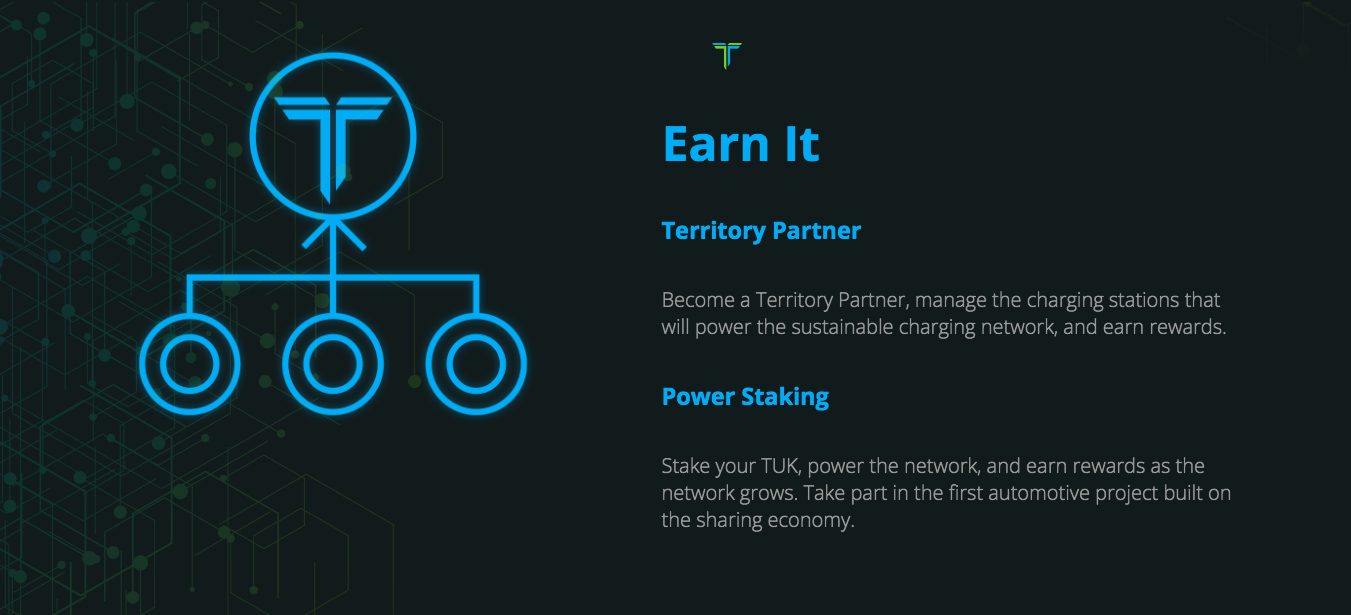
What’s more, eTukTuk is developing a novel Play to Earn (P2E) game in which players can earn rewards as they drive their virtual Tuk Tuk through the streets of Sri Lanka.
The project has a vision of an accessible, profitable, and environmentally friendly transport system that sets an example for other countries. You can follow the latest updates on the eTukTuk Telegram channel.
| Presale Started | February 2023 |
| Purchase Methods | ETH, USDT, BNB, Card |
| Chain | Ethereum |
| Min Investment | $10 |
| Max Investment | None |
3. Bitcoin Minetrix (BTCMTX) – Best for Reducing Bitcoin Mining Energy
Bitcoin Minetrix adopts a unique stake-to-mine concept – allowing everyday people to earn mining rewards by accessing tokenized cloud mining credits.
Cloud mining is a process through which companies rent out mining time to individuals. This reduces the need for mining rigs and hardware. In abundance, these plants can lead to an increase in pollution. By promoting cloud mining, Bitcoin Minetrix is allowing users to rent out mining equipment in a cost-effective manner.

Bitcoin Minetrix is the first to decentralize this process – by offering ERC-20 credits representing the cloud mining credits. These can be earned by buying and staking $BTCMTX on an Ethereum-based smart contract. The credits you collect can be burned on the ecosystem to earn Bitcoin cloud mining power.
With this, users get allocated mining times and earn a portion of the crypto mining revenues. Therefore, Bitcoin Minetrix plays an integral role in promoting crypto mining in an environment-friendly and efficient manner. Furthermore, staked token holders can also generate APYs (Annual Percentage Yields) as high as 59% with $BTCMTX.
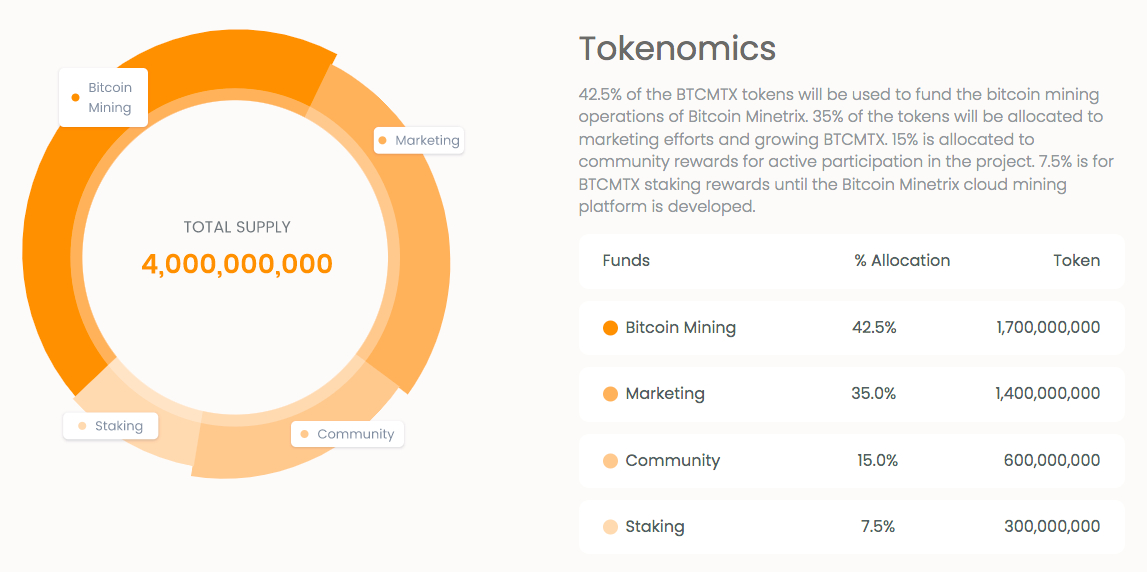
From a total supply of 4 billion, 2.8 billion tokens have been allocated for the ongoing $BTCMTX presale. The presale will consist of 39 rounds – and look to raise more than $34 million. Currently, $BTCMTX is priced at $0.0137 per token, but will rise to $0.0148 by the final round.
Since the presale launched, Bitcoin Minetrix has raised more than $11.2 million. Interested investors could choose to acquire $BTCMTX before the price rises each round. Read the Bitcoin Minetrix whitepaper and join the Telegram channel to learn more about this crypto project.
| Presale Started | 26 Sept 2023 |
| Purchase Methods | ETH, USDT, BNB |
| Chain | Ethereum |
| Min Investment | $10 |
| Max Investment | None |
4. Tezos (XTZ) – Best for Rapid Transaction Speed and Energy Efficiency
Tezos has made a name for itself in the past year through high-profile partnerships with Manchester United and McLaren Racing, helping to raise awareness of this exciting project. Such a high profile has helped Tezos’ team expand the network and make it more eco-friendly.
Tezos’ recent TezDev Conference saw the development team highlight plans to make the network capable of handling an incredible one million transactions per second (TPS) in the coming years. This will be achieved with sustainability in mind since the Tezos network uses the same amount of energy per year as just 17 global citizens.

These elements have made Tezos one of the most searched crypto projects on the market, with investors also appealed by the development team’s assertion that the network will use less power as it grows. Finally, Tezos’ team even provides accurate emissions data for the blockchain every month – with emissions trending lower as the years have gone on.
Despite being some 800% off all-time highs, investor confidence in Tezos remains high with the price gaining 90% in the last 4 months alone. Whether this bullish sentiment continues depends on the team’s ability to accomplish its long-term goals.
5. Ethereum (ETH) – Best for Developing Sustainable dApps
Another of the most eco-friendly cryptocurrencies to be aware of is Ethereum. For the longest time, Ethereum used the ‘Proof-of-Work’ (PoW) consensus mechanism, which relies on energy-intensive ‘mining’ to secure the network. However, Ethereum has recently transitioned to a ‘Proof-of-Stake’ (PoS) consensus mechanism, which uses much less energy.
Due to this change, Ethereum has been touted as the next cryptocurrency to explode, as the network now uses 99.9% less energy than before. What’s more, Ethereum’s team now clearly focuses on sustainability, even calling the network a ‘green blockchain’.
The price of Ethereum has gained over 30% since the start of the year, yet the 2nd largest currency by market cap is still some 54% away from its all-time high of $4,635. Given Ethereum’s notoriously slow price action, it may appear a long way to go before significant price discovery. However, with talk of Ethereum ETFs and software upgrades just around the corner, many market analysts believe 2024 could be bullish for Ethereum.

This eco-friendly crypto also offers additional benefits to investors since moving to a ‘greener’ consensus mechanism, such as the ability to generate a yield through staking. What’s more, with the upcoming Dencun upgrade, Ethereum’s team plans to implement a ‘sharding’ approach sometime in 2024. This redesign will make the network even more efficient and accessible and help boost its positive environmental impact.
6. Solana (SOL) – Carbon Neutral and Efficient Blockchain Network
Solana is one of the few environmentally-friendly cryptocurrencies that look to improve on the services offered by the Ethereum network. Like Ethereum, Solana is a smart contract-enabled blockchain that provides a foundation for decentralized app (dApp) developers and NFT creators. However, Solana is much more scalable due to its unique consensus algorithm.
This algorithm is a hybrid of Proof of Stake and Proof of History, meaning that the Solana network can reportedly handle 65,000 TPS, with each costing less than a fraction of a penny. Solana can also be considered an eco-friendly protocol since one Solana transaction uses just 3,290 Joules of electricity. To put this into perspective, this is less than four Google searches.
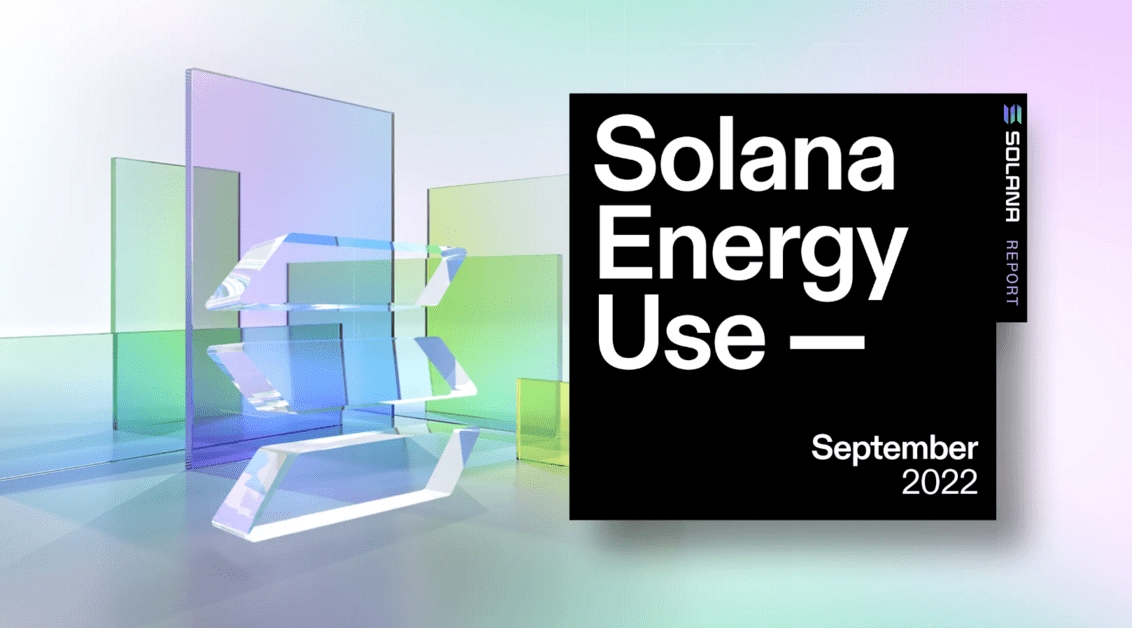
Solana remains a very popular choice for crypto investors and, at time of press, has gained some 500% in the last 4 months alone. Whether this growth will continue remains to be seen but with little more than 140% to go before reaching all-time highs, it is clear that the future looks bright.
Many believe that Solana is the crypto with the most upside potential due to its scalability and sustainability. This latter point is strengthened further through Solana’s partnership with Watershed Climate, which sees Solana offset its emissions by funding refrigerant destruction. Through this process, the Solana network has become carbon neutral, with the developers aiming to remain this way over the long term.
7. IOTA (MIOTA) – Energy Efficient Crypto with No Transaction Fees
IOTA differs from the other environmentally-friendly cryptocurrencies on our list due to its novel approach concerning the ‘Internet of Things’ (IoT). Put simply, IOTA is a distributed ledger that allows devices to interact and transact with one another. As noted by Forbes, IOTA validates transactions through a new technology called ‘the Tangle’.
This technology doesn’t require mining and completely removes transaction fees, ensuring it is highly scalable. Due to this, IOTA can be considered one of the most environmentally-friendly cryptocurrencies in 2024, as a recent IOTA blog post noted that a transaction on the network only consumes around 0.00678 Joules.
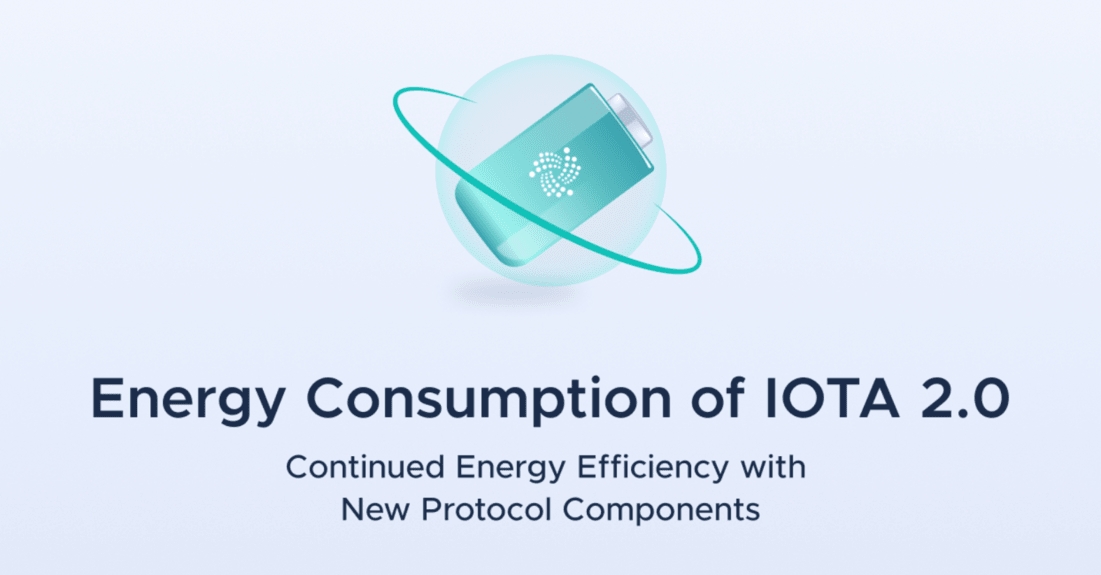
For context, this is less energy than it takes to light a Christmas tree light for one second – highlighting the network’s energy efficiency. What’s more, IOTA’s recent software upgrade means the network now consumes just under 205 TWh of electricity per year, which is about 0.000009% of Bitcoin’s annual energy requirement.
Despite doubling in price in the last 4 months, at the time of press IOTA remains some 2000% off its all-time high of $5.40. For those thinking of buying IOTA, this may cast serious doubt on the project’s attraction for large-scale investment.
8. Polkadot (DOT) – Best Network for Interoperability
Polkadot has garnered a reputation as one of the most volatile cryptos on the market yet has remained popular with investors due to its low-power approach. For those unaware, Polkadot is an innovative protocol that promotes interoperability between blockchains. The protocol has a central hub, called the relay chain, that can process the transactions on chains surrounding it.
These surrounding chains are called ‘parachains’, which are essentially blockchains with specific use cases. Since the relay chain handles all verification, developers on these parachains can focus solely on expanding the network rather than its security.
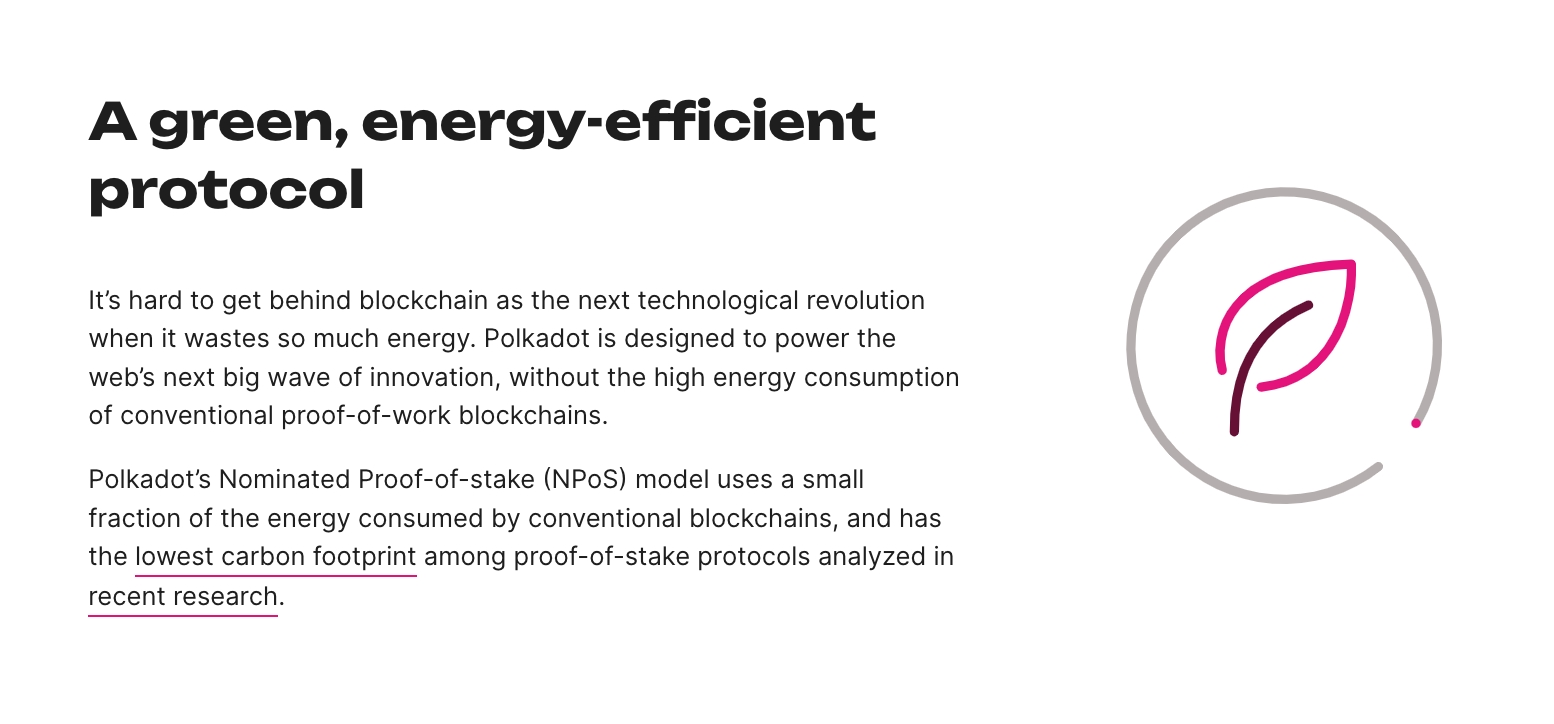
According to Bloomberg, Polkadot has the lowest total electricity consumption and carbon emissions of the six leading PoS chains. What’s more, Polkadot’s innovative Nominated Proof-of-Stake (NPoS) mechanism means that it uses a fraction of the energy that Bitcoin does – highlighting how eco-friendly this project is.
Despite doubling in price between October and December 2023, Polkadot has been in decline since the New Year leaving many investors frustrated. That said, optimism around the future of Polkadot remains high, with many looking to buy Polkadot as they expect new all-time highs in 2024.
9. Algorand (ALGO) – Carbon-Negative Project with Environmentalist Founder
Rounding off our list of the most environmentally-friendly cryptocurrencies in 2024 is Algorand. Algorand is a smart contract-enabled blockchain founded by MIT professor Silvio Micali. Micali won the Turing Award back in 2012 and has ensured the Algorand network employs eco-friendly technology to remain sustainable.
Algorand uses a unique ‘Pure Proof-of-Stake’ (PPoS) consensus mechanism, meaning that each transaction on the network uses just 0.0000004 kg of CO2. This means Algorand’s annual energy requirements are roughly the same as just seven average households.

In addition, Algorand’s team actively offset the network’s carbon footprint by using smart contracts to buy carbon credits. Through this process, Algorand has become carbon-negative on a net basis, making this one of the most eco-friendly cryptocurrencies on our list.
The SEC’s decision to brand Algorand a security hit investor confidence hard. While other leading blockchain projects witnessed significant growth through 2023, at the time of press, Algorand has declined by 30% in the past year. At current prices, all-time highs seem like a lifetime away. That said, Algorand is much vaunted by the crypto community and project goals remain on track.
What Makes a Cryptocurrency Eco-Friendly?
Now that we’ve highlighted which eco-friendly cryptocurrencies are worth checking out, let’s take a closer look at what these cryptos actually do. Many new cryptocurrency projects claim to be eco-friendly – yet there’s a crucial difference between those that aim to be and those that are.
There’s no escaping the fact that blockchain networks consume electricity. Since there’s no way around this, leading blockchains have continued to innovate over the past few years and develop ways in which they can limit their electricity use. By limiting their electricity requirements, these blockchains can reduce (or eradicate) their carbon footprint.

The primary way developers can make their projects eco-friendly is by using an alternative to the Proof-of-Work (PoW) consensus protocol popularized by Bitcoin. According to a recent report by The White House, the Bitcoin network accounts for between 60% and 77% of the total global crypto-asset electricity usage.
Naturally, Bitcoin’s huge energy requirements have created a demand for alternatives, which is where these eco-friendly projects come in. Most use a consensus protocol called ‘Proof-of-Stake’ (PoS), which removes the need for the energy-intensive computing hardware used during the mining process. In turn, this drastically reduces the electricity requirements for PoS chains.
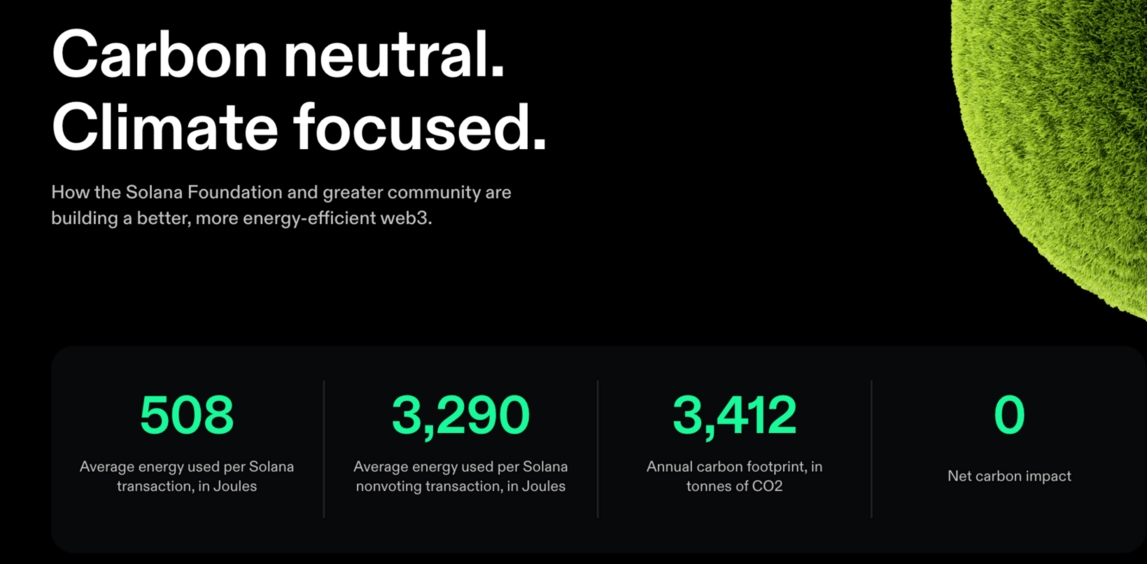
Although many of the best altcoins now employ a PoS protocol, some even take things one step further. For example, Solana uses a ‘hybrid’ protocol that allows the network to be eco-friendly whilst remaining highly scalable. Solana’s team also actively reduces the network’s carbon footprint by funding refrigerant destruction – one of the best ways to offset CO2 emissions.
So, in a nutshell, the main characteristic of eco-friendly cryptos is that they employ technologies designed to reduce electricity consumption. This approach has become more prevalent recently, seeing PoW projects like Bitcoin and Litecoin receive less attention. Given the growing need for positive environmental change, this trend shows no signs of slowing.
Why Environmentally-Friendly Cryptocurrency is Important
Many of the best future cryptocurrency projects will likely focus heavily on sustainability – yet why is this so important? To answer this question, detailed below are four reasons why eco-friendly cryptos will continue to be vital over the long term:
Is Appropriate for ESG-focused Investors
Eco-friendly cryptos are crucial since they offer a viable alternative for investors interested in sustainable projects. These investors have had their hands tied in recent years, as most projects were energy-intensive compared to today’s networks, yet this has begun to change.
ESG-focused investors now have an array of investment opportunities since leading cryptos like Tezos, Solana and Ethereum, all utilize energy-efficient technology. What’s more, as these cryptos grow in popularity, other new projects will likely follow suit and take a sustainable approach – thereby boosting the positive environmental impact.
Helps Reduce Carbon Dioxide Emissions
According to the Environmental Protection Agency (EPA), 65% of global greenhouse gas emissions are attributed to carbon dioxide from fossil fuels and industrial processes. This means that electricity generation is a considerable burden on the environment, which is why energy-intensive cryptos like Bitcoin have got such a bad rap.
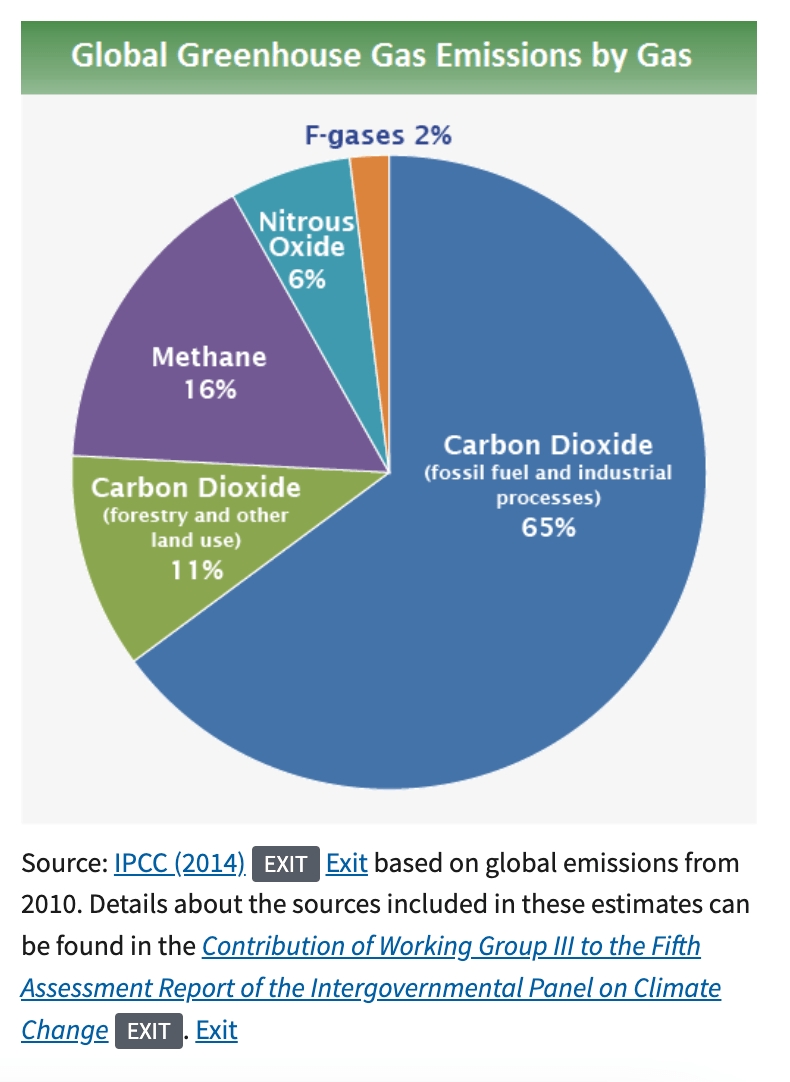
However, environmentally friendly cryptocurrencies look to reverse these adverse effects by limiting their energy requirements. In addition, many cryptos also remove their carbon footprint by purchasing offsets – highlighting how important these projects are in the battle against climate change.
Promotes Innovation in the Crypto Market
The rise of eco-friendly cryptocurrencies has also helped the market as a whole. Due to the competitive nature of the market, whenever a project leaps ahead of the others in terms of sustainability, it naturally prompts those who have been left behind to look for ways that they can improve.
On a macro level, this enables the entire market to become more energy-efficient, leaving energy-intensive projects by the wayside. If this trend continues over the long term, we’ll likely see new and exciting technologies emerge that improve on those of today.
Generates Good Publicity for Cryptocurrencies
Finally, as more and more cryptos become eco-friendly, it helps to change people’s perception of the crypto market. Due to Bitcoin’s size and pop culture appeal, most people focus solely on its environmental impact rather than considering the good done by other projects.

However, as these eco-friendly cryptocurrencies continue to grow, less attention will be paid to BTC and more will be paid to these sustainable projects. In turn, this should naturally create positive publicity for the crypto market as a whole – which benefits all stakeholders.
Provides Scope for High Returns
Investing in sustainable crypto can also be lucrative, as these projects often have the most extended lifespan. This is because sustainable cryptos tend to employ the latest technology to reduce their electricity consumption, helping them stay ahead of the pack.
What’s more, a growing number of investors are becoming environmentally conscious, meaning these sustainable projects are even more appealing than before. As more investment flows into these projects, it’ll help them expand and improve – providing scope for higher investor returns.
One of the most successful environmentally friendly projects is Solana. Established in March of 2020, Solana has a current market cap of over $44 billion making it the 5th largest cryptocurrency available today. Solana’s commitment to responsible sustainability and carbon neutrality was one of the reasons a large amount of investors flocked to the in its early stages. Consequently, those who took the risk have already made significant returns on their investment.
Helps Futureproof the Market
Finally, the rise of sustainable cryptocurrencies has undoubtedly helped the crypto market’s longevity, which was at risk when Bitcoin was the only viable option. With more projects than ever utilizing sustainable practices, the market’s future looks exceedingly bright.
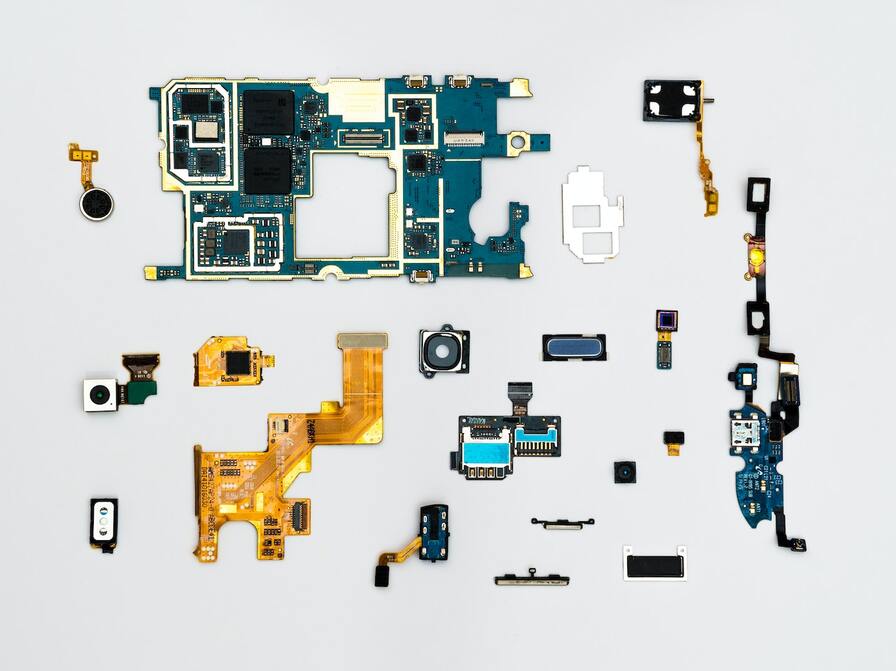
Furthermore, due to the market’s competitive nature, these projects will naturally continue to innovate to stay ahead of the pack. Not only will this benefit the project individually, but it’ll prompt other projects to follow suit – helping boost the positive environmental impact.
How to Find Eco-Friendly Cryptocurrencies
Some of the fastest-growing cryptocurrency projects on the market utilize eco-friendly technologies, making them appealing to environmentally-conscious investors. Those looking to get involved in these projects can identify them using the following approaches:
Analyze Industry Reports
A great way to find eco-friendly cryptos is to look for industry reports that analyze the energy usage of leading blockchains. A great place to start is with the Crypto Carbon Ratings Institute (CCRI), which regularly authors reports on blockchain networks, tokens, and NFTs.

By reviewing the information in reports like those authored by the CCRI, investors can gain verifiable insight into which cryptos are doing the most for the environment – and which aren’t.
Research the Underlying Technology
Many of the best metaverse coins use cutting-edge technologies, and eco-friendly cryptos are no different. Thus, investors looking to find these cryptos can keep tabs on the latest technological innovations and seek out projects that utilize them.
For example, the Chia network’s ‘Proof-of-Space-and-Time’ consensus algorithm is a relatively new innovation that offers an alternative to PoW and PoS mechanisms. Furthermore, some blockchains look to improve already-established technologies – an example being Algorand’s Pure Proof-of-Stake consensus.
Review the Project’s Website/Whitepaper
Like when searching for the best upcoming ICOs, investors looking to identify eco-friendly cryptos can review the project’s website and whitepaper. Both of these elements are great resources for learning about the project and the values the development team holds.
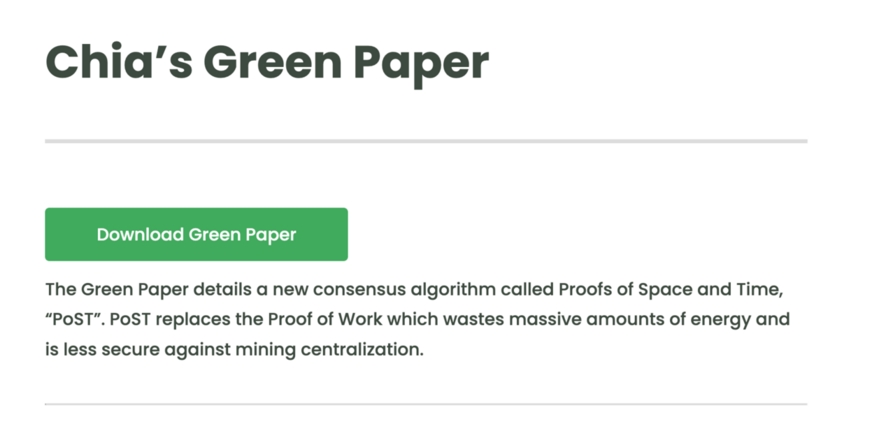
The whitepaper is especially important since this document will detail the technology underlying the project. Thus, by reviewing the whitepaper thoroughly, investors can see whether the project is sustainable or not.
Keep Tabs on Social Media Platforms
Finally, investors can also use Twitter, Reddit, and Discord to keep tabs on various crypto projects and identify which have eco-friendly principles. Some of the most popular social media channels include Ethereum on X, Solana on Reddit and Algorand on Discord. Due to the importance of green principles, projects that aim to improve the environment will often display their efforts on social media for all to see.
Furthermore, some projects may even quote third-party institutions that have reported positive information about them. Thanks to this, it’s relatively easy for investors to see which projects are actively helping the environment.
Most Eco-Friendly Cryptocurrencies – Conclusion
In summary, this guide has taken an in-depth look at the most eco-friendly cryptocurrencies on the market, exploring how they reduce their energy requirements and make a positive impact on the global environment.
Our top choice for the most eco-friendly crypto is Green Bitcoin, a green cryptocurrency that is 10,000 times more eco-friendly than Bitcoin. This cryptocurrency offers staking rewards by adopting the proof-of-stake consensus. Token holders can also participate in daily BTC price prediction rewards and earn bonuses.
Eco Friendly Crypto FAQs
What is an environmentally friendly cryptocurrency?
Environmentally friendly cryptocurrency projects are those that actively limit their energy requirements, reducing their contribution to global warming. However, many of these projects take things one step further and purchase carbon credits to offset their emissions entirely.
What are the most eco-friendly cryptocurrencies?
One of the best environmentally-friendly cryptos is Green Bitcoin – a PoS cryptocurrency that is more eco-friendly than Bitcoin. Investors can access high staking yields and daily rewards by predicting the price of Bitcoin.
Which crypto has the lowest carbon footprint?
Through our research and analysis, we’ve found that Tezos has one of the lowest carbon footprints in the crypto market. The Tezos network consumes just over 113,200 kWh per year, which is around the same amount as just 10 US households.
References
https://nz.finance.yahoo.com/news/ethereum-developers-target-march-13-143051030.
htmlhttps://www.forbes.com/advisor/investing/cryptocurrency/what-is-iota
https://blog.iota.org/energy-consumption-of-iota-2-0
https://www.whitehouse.gov/wp-content/uploads/2022/09/09-2022-Crypto-Assets-and-Climate-Report.pdf
https://www.epa.gov/ghgemissions/global-greenhouse-gas-emissions-data
Disclaimer: Crypto is a high-risk asset class. This article is provided for informational purposes and does not constitute investment advice. You could lose all of your capital.
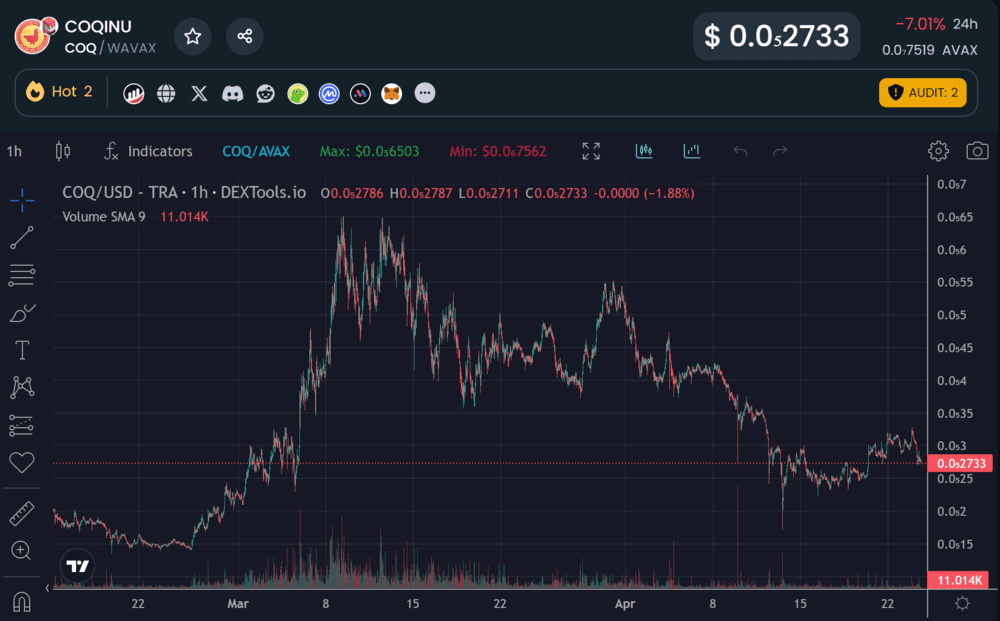
 Michael Graw
Michael Graw 
 Eliman Dambell
Eliman Dambell 

 Eric Huffman
Eric Huffman